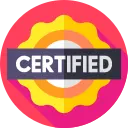FREE
daily Instructor: Dr. Matthew TerryCourse Overview
Diagnosing the Root Causes of Entrepreneurial Stagnation
Identifying Personal Contribution Factors
- Assessing Skill Gaps: A detailed examination of your current skillset compared to the evolving demands of your business and industry. This includes technical skills, management abilities, and strategic thinking. Specifically learning to identify the difference between needed skills for the company’s growth, and skills needed to simply manage daily operations.
- Evaluating Motivation and Mindset: Exploring the psychological factors contributing to stagnation, such as burnout, fear of failure, and limiting beliefs. This involves employing techniques like cognitive reframing and goal recalibration to reignite passion and purpose.
- Analyzing Time Management and Productivity: Identifying inefficiencies in your daily routine and implementing strategies to optimize focus and output. This encompasses techniques such as the Pomodoro Technique, Eisenhower Matrix, and effective delegation.
Analyzing External Market and Competitive Factors
- Market Trend Analysis: Conducting a deep dive into current market trends, technological advancements, and evolving consumer preferences. Understanding the key changes driving these trends and their potential impact on your business model.
- Competitive Landscape Mapping: Identifying and analyzing your direct and indirect competitors, evaluating their strengths, weaknesses, strategies, and market positioning. This involves conducting competitive audits and SWOT analyses.
- Industry Disruption Assessment: Evaluating the potential for disruptive technologies or business models to impact your industry and your business. This includes scenario planning and risk assessment.
Analyzing Business Model and Strategic Factors
- Business Model Review: Critically evaluating the core components of your business model, including value proposition, customer segments, revenue streams, and key resources. This involves identifying areas for improvement and innovation.
- Strategic Alignment Audit: Assessing the alignment of your business strategy with your overall goals and objectives. This involves ensuring that all functional areas of your business are working towards a common vision.
- Performance Metrics Analysis: Evaluating key performance indicators (KPIs) to identify areas where your business is underperforming. This includes financial metrics, customer metrics, and operational metrics.
Developing a Personalized Turnaround Strategy
Strategic Goal Recalibration and Visioning
- Defining New Strategic Objectives: Setting clear, measurable, achievable, relevant, and time-bound (SMART) goals that align with your revised vision for the business. This involves prioritizing key objectives and developing a roadmap for achieving them.
- Developing a Compelling Business Narrative: Crafting a powerful and inspiring narrative that communicates your vision to stakeholders, including employees, investors, and customers. This involves articulating your unique value proposition and competitive advantage.
- Strategic Alignment Cascade: Aligning departmental and individual goals with the overarching strategic objectives, ensuring that everyone is working towards the same outcomes. This involves fostering a culture of collaboration and shared accountability.
Implementing Operational and Structural Changes
- Process Optimization and Automation: Identifying and streamlining key business processes to improve efficiency and reduce costs. This involves implementing automation tools and technologies where appropriate.
- Organizational Restructuring: Re-evaluating your organizational structure to ensure it supports your strategic goals. This may involve creating new departments, reassigning responsibilities, or outsourcing non-core functions.
- Technology Adoption and Integration: Identifying and implementing new technologies that can improve productivity, enhance customer experience, and drive innovation. This involves conducting technology assessments and developing implementation plans.
Financial Restructuring and Resource Allocation
- Financial Analysis and Forecasting: Developing accurate financial models to project future performance and identify potential funding needs. This involves conducting sensitivity analysis and scenario planning.
- Resource Reallocation and Optimization: Reallocating resources to support strategic priorities and maximize return on investment. This involves identifying areas where resources can be reduced or redirected.
- Funding and Investment Strategies: Exploring various funding options, such as venture capital, angel investment, and debt financing, to secure the capital needed to support your growth plans. This involves preparing investment decks and pitching to potential investors.
Building Resilience and Preventing Future Stagnation
Developing a Growth Mindset and Continuous Learning
- Embracing Experimentation and Innovation: Fostering a culture of experimentation and encouraging employees to take risks and learn from failures. This involves creating a safe space for innovation and rewarding creativity.
- Continuous Skill Development: Investing in ongoing training and development for yourself and your employees to stay ahead of the curve. This involves identifying emerging trends and technologies and acquiring the skills needed to capitalize on them.
- Seeking Mentorship and Networking: Building relationships with experienced entrepreneurs and industry experts who can provide guidance and support. This involves attending industry events, joining professional organizations, and seeking out mentors.
Establishing Proactive Monitoring and Early Warning Systems
- Key Performance Indicator (KPI) Tracking: Regularly monitoring key performance indicators to identify potential problems early on. This involves setting up dashboards and reports that provide real-time insights into business performance.
- Market Research and Competitive Intelligence: Continuously monitoring market trends and competitor activities to identify potential threats and opportunities. This involves conducting regular market research and competitive analysis.
- Customer Feedback and Sentiment Analysis: Actively soliciting customer feedback and analyzing sentiment to identify areas for improvement and address potential issues before they escalate. This involves using surveys, focus groups, and social media monitoring tools.
Creating an Adaptive and Agile Business Culture
- Agile Methodologies Implementation: Adopting agile methodologies to improve responsiveness to change and accelerate product development. This involves using iterative development cycles, cross-functional teams, and continuous feedback loops.
- Decentralized Decision-Making: Empowering employees to make decisions and take ownership of their work. This involves delegating authority and providing employees with the resources they need to succeed.
- Open Communication and Transparency: Fostering a culture of open communication and transparency where employees feel comfortable sharing ideas and concerns. This involves regularly communicating business goals and performance metrics to employees.
FlashCards
External Resources
Add-On Features
Expert Instructor
Get live study sessions from experts
Honorary Certification
Receive a certificate before completing the course.
Currency
Sign in to change your currency
I'm not ready to enroll?
Tell us why, because it matters.
Enroll With a Key
Course Benefits
Get a Job
Use your certificate to stand out and secure new job opportunities.
Earn More
Prove your skills to secure promotions and strengthen your case for higher pay
Learn a Skill
Build knowledge that stays with you and works in real life.
Lead Teams
Use your certificate to earn leadership roles and invitations to industry events.
Visa Support
Use your certificate as proof of skills to support work visa and immigration applications.
Work on Big Projects
Use your certificate to qualify for government projects, enterprise contracts, and tenders requiring formal credentials.
Win Partnerships
Use your certified expertise to attract investors, get grants, and form partnerships.
Join Networks
Use your certificate to qualify for professional associations, advisory boards, and consulting opportunities.
Stand Out Professionally
Share your certificate on LinkedIn, add it to your CV, portfolio, job applications, or professional documents.
Discussion Forum
Joe Swanson
7 months ago
The tests on revenue channel ideas were straightforward and actionable.
I’m starting two pilot partnerships this week.
Any tips to keep those conversations focused and productive?
Anonymous Gifting

Gift ikforshort's comment an award anonymously
Sign in to receive 4 more awards with every purchase
Get Awards

|
MVP $ 10.00 |
$ 10.00 |
|

|
Comrade $ 5.00 |
$ 5.00 |
|

|
You are Outstanding $ 2.00 |
$ 2.00 |
|

|
You made my day $ 1.00 |
$ 1.00 |
|
Peter Griffin ↣ Joe Swanson
↣ Joe Swanson
7 months ago
I usually send a short agenda, laser-focus on the goal, then agree on next steps, which keeps the chat productive. Good luck!
Anonymous Gifting

Gift ikforshort's reply an award anonymously
Sign in to receive 4 more awards with every purchase
Get Awards

|
MVP $ 10.00 |
$ 10.00 |
|

|
Comrade $ 5.00 |
$ 5.00 |
|

|
You are Outstanding $ 2.00 |
$ 2.00 |
|

|
You made my day $ 1.00 |
$ 1.00 |
|
Frequently Asked Questions
For detailed information about our Navigating Career Stagnation for Entrepreneurs course, including what you’ll learn and course objectives, please visit the "About This Course" section on this page.
The course is online, but you can select Networking Events at enrollment to meet people in person. This feature may not always be available.
We don’t have a physical office because the course is fully online. However, we partner with training providers worldwide to offer in-person sessions. You can arrange this by contacting us first and selecting features like Networking Events or Expert Instructors when enrolling.
Contact us to arrange one.
This course is accredited by Govur University, and we also offer accreditation to organizations and businesses through Govur Accreditation. For more information, visit our Accreditation Page.
Dr. Matthew Terry is the official representative for the Navigating Career Stagnation for Entrepreneurs course and is responsible for reviewing and scoring exam submissions. If you'd like guidance from a live instructor, you can select that option during enrollment.
The course doesn't have a fixed duration. It has 28 questions, and each question takes about 5 to 30 minutes to answer. You’ll receive your certificate once you’ve successfully answered most of the questions. Learn more here.
The course is always available, so you can start at any time that works for you!
We partner with various organizations to curate and select the best networking events, webinars, and instructor Q&A sessions throughout the year. You’ll receive more information about these opportunities when you enroll. This feature may not always be available.
You will receive a Certificate of Excellence when you score 75% or higher in the course, showing that you have learned about the course.
An Honorary Certificate allows you to receive a Certificate of Commitment right after enrolling, even if you haven’t finished the course. It’s ideal for busy professionals who need certification quickly but plan to complete the course later.
The price is based on your enrollment duration and selected features. Discounts increase with more days and features. You can also choose from plans for bundled options.
Choose a duration that fits your schedule. You can enroll for up to 180 days at a time.
No, you won't. Once you earn your certificate, you retain access to it and the completed exercises for life, even after your subscription expires. However, to take new exercises, you'll need to re-enroll if your subscription has run out.
To verify a certificate, visit the Verify Certificate page on our website and enter the 12-digit certificate ID. You can then confirm the authenticity of the certificate and review details such as the enrollment date, completed exercises, and their corresponding levels and scores.
Can't find answers to your questions?
Certification Guide

Complete the Course
Begin the course by selecting your experience level in the course content section:
Beginner: Master the material with interactive questions and enough time.
Intermediate: Get certified faster with hints and balanced questions.
Advanced: Challenge yourself with more questions and less time

Earn Your Certificate
To download and share your certificate, you must achieve a combined score of at least 75% on all questions answered.





 67
67
 73
73




